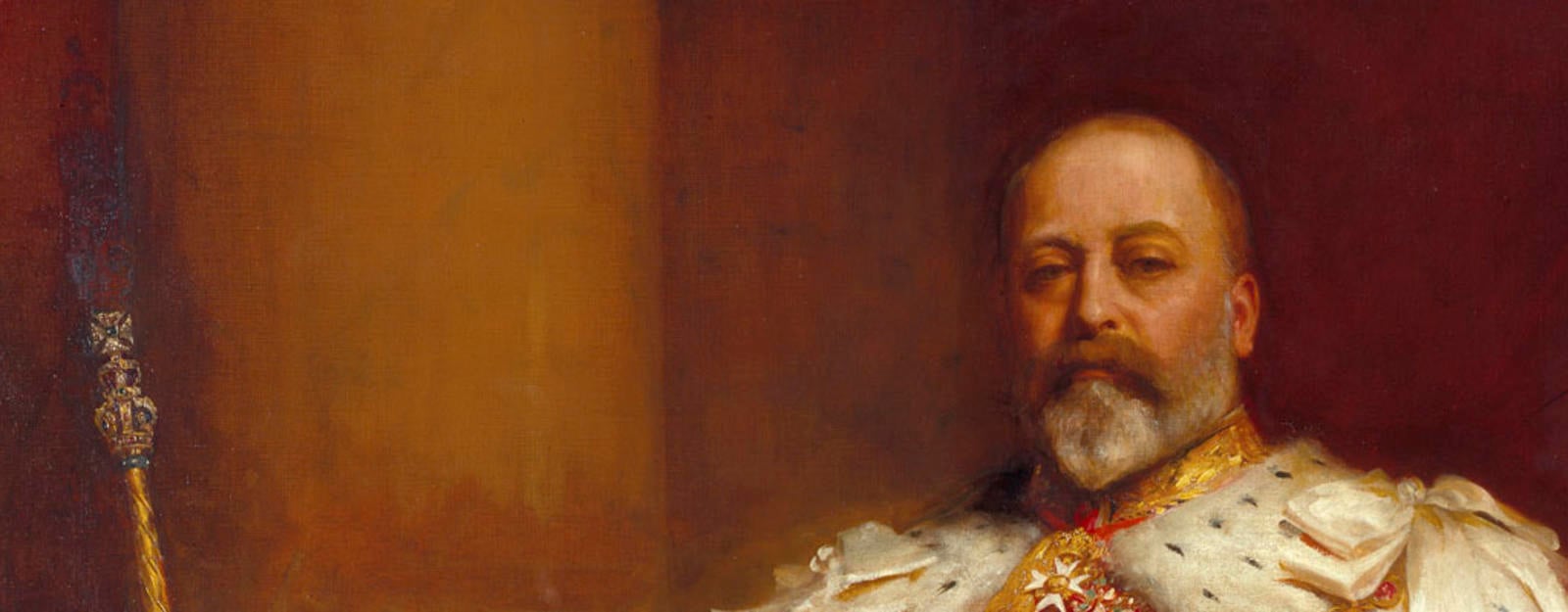King Edward VII, King of the United Kingdom (1841-1910)

- Born 1841, Buckingham Palace
- Died 1910, Buckingham Palace
King Edward VII was the eldest son of Queen Victoria and Prince Albert. In 1863 he married Princess Alexandra of Denmark; their second son succeeded as King George V after the death of their eldest son, the Duke of Clarence, in 1892. On his accession in 1901, he was the first member of the Saxe-Coburg and Gotha dynasty.
As Prince of Wales, Edward VII lived chiefly at Marlborough House, London and at Sandringham House, Norfolk. He was a well-travelled Prince of Wales, visiting the Near East in 1862 and India, on behalf of Queen Victoria, in 1875-6. During this latter trip he was presented with quantities of jewelled arms and armour that are now part of the Royal Collection. These were exhibited at the Indian Museum at South Kensington before being displayed at his residence, Marlborough House. Other art works and artefacts from his travels were installed at Sandringham, his country house in Norfolk.
Edward also had an eye for British painters and sculptors. He bought two works by Frederic, Lord Leighton, and supported Leighton's appointment as President of the Royal Academy. In 1892 after the tragic death of his son, the Duke of Clarence, Edward commissioned Alfred Gilbert to create the Art Nouveau tomb at Windsor. This extraordinary tour-de-force of whiplash metal forms and sculpted figures is a fine memorial, located in the Albert Memorial Chapel, at St George's Chapel, though it rather dominates in size and scale.
Edward VII also bought many items from Fabergé as gifts for Queen Alexandra, who had been introduced to Fabergé by her sister, Marie Fedorovna (from 1881 the Tsarina of Russia). Perhaps the most famous commission was for models of animals at Sandringham, each one unique and handmade. Craftsmen came to Sandringham and made wax models of the animals and then the models were sent to Moscow where they were carved in different hard stones in the workshop of Henrik Wigström. They were kept in stock by Fabergé London, and purchased over the years by family and friends. The Royal Collection now has more than 200 of them. Collectively they are known as the Sandringham Commission.
After his accession to the throne, at the age of almost sixty, Edward VII initiated a major refurbishment and redecoration project at Buckingham Palace. In 1902 he gave Osborne House on the Isle of Wight, and its estate, to the nation.
Reigned: 1901–10